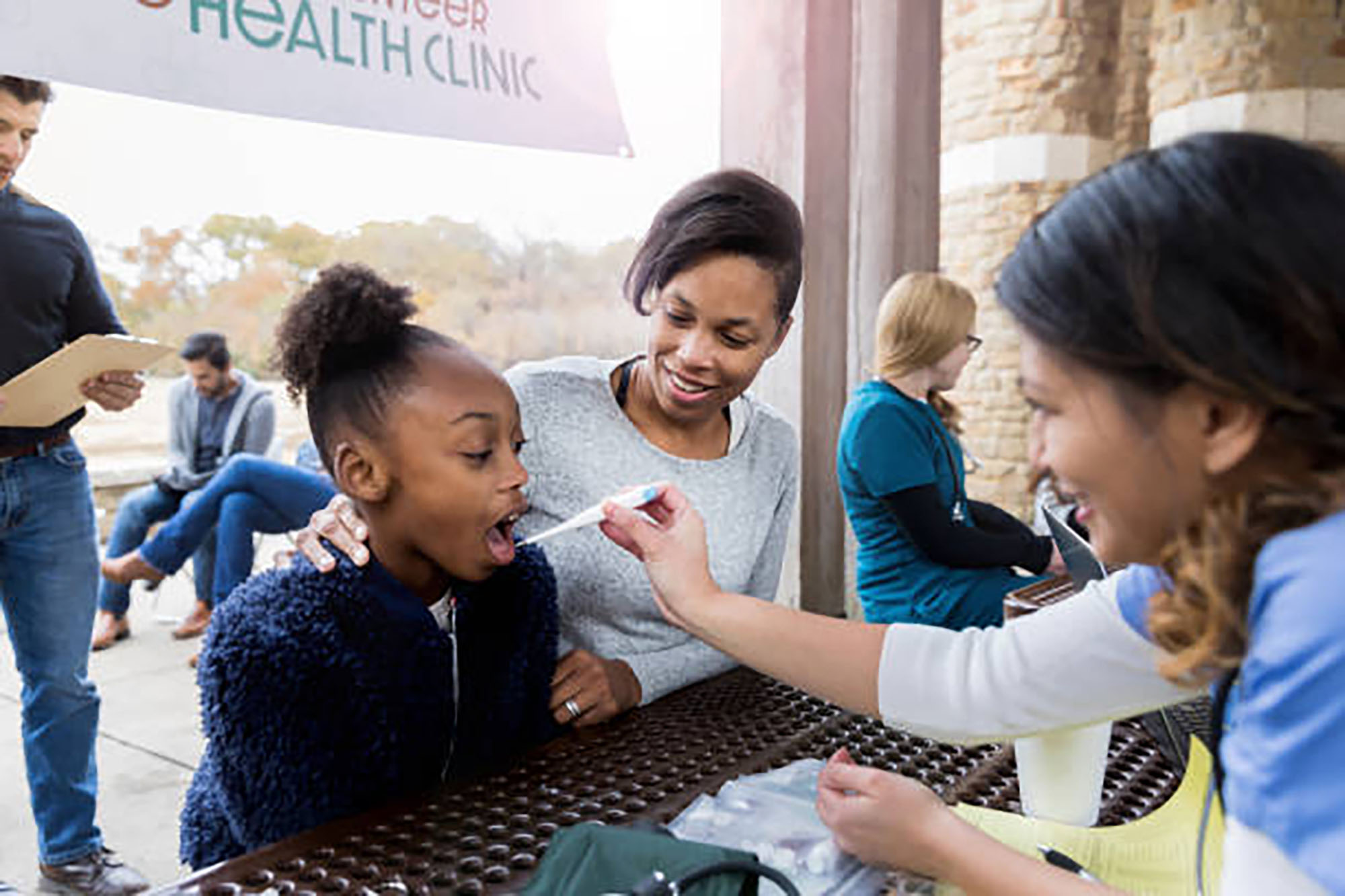
Thursday, July 6, 2022
Called to Care believes that every Californian, no matter where they live or their circumstances, should have access to high-quality health services. The health and well-being of all of the communities in our state are strengthened when health care is within equal reach for everyone.
Overview: Health Care for Small and Rural Communities
California is a large and diverse state—with communities of greatly varying size and density, age, diversity and income. This geographic range and diversity is a source of strength, but it also creates challenges for accessing health care and addressing social factors that impact health.
Rural California communities face a range of economic, sociological, and environmental challenges that affect the population’s health. Per capita income for rural California trails urban areas by more than 25%, according to the U.S. Department of Agriculture’s Economic Research Service. Lower-income and immigrant communities are more likely to delay or forego medical treatment. Limited transportation options and a lack of broadband connectivity impair rural access to health care and other services. California farming communities—particularly laborers and people of color—experience health disparities, including greater risk of COVID-19 exposure, morbidity and mortality.
The steadfast commitment of California’s Catholic health systems to care for the underserved and marginalized goes back more than 165 years. These providers are committed to communities for the long term, fulfilling a mission to provide innovative and high-quality health services delivered with care and compassion. These providers also partner with a variety of community organizations to address additional factors that impact health, such as housing, transportation, and food security. We believe that addressing social determinants of health is important for improving health and reducing longstanding disparities in health access and health care.
Called to Care supports and values the commitment of California’s safety net health care providers, many of which are Catholic health care sites, to provide access to health care for those living in both urban and rural communities and those facing financial challenges. These providers are serving these communities by:
- Expanding Access to Health Care for All. Guided by the principle that health care is a human right, advocating for access to high-quality, affordable health care for all, especially those among us who are vulnerable and/or living in the margins of society, including undocumented immigrants and those with limited means.
- Reaching Out Where There Is Need. Establishing innovative models to deliver care, such as telemedicine; serving rural areas, many of which have limited medical resources.
- Engaging Communities and Breaking Down Barriers. Partnering with community organizations to take critical, high-quality, culturally competent services directly to community members.
Reaching Californians Where They Live and Work
No one should have to travel long distances to receive essential medical care. Catholic-affiliated health providers help break down barriers to accessing high-quality health care by bringing services to people where they live and work. Key examples include:
- Dignity Health’s Gold-Standard Cancer Care in Merced — Dignity Health and UC Davis collaborate to meet the needs of more than 13,000 cancer patients annually, providing radiation oncology and other critical specialized care that wouldn’t otherwise be available in the area. Community programs provide a holistic approach to treatment that includes emotional and spiritual support in additional to medical therapies.
- Mobile Health Clinic in Sonoma County — Providence Santa Rosa Memorial Hospital brings health care directly to vulnerable communities in Sonoma County with its state-of-the-art Mobile Health Clinic van. This facility on wheels travels to homeless shelters, encampments, and low-income communities to provide services at no cost to underserved populations, including undocumented and uninsured individuals.
- Mobile Vaccination Clinics for Farmworker — During the COVID-19 pandemic, Dignity Health and local partners brought vaccinations directly to farmworkers where they were working. This effort helped protect vulnerable, essential workers in farming communities in Ventura, Yolo and Santa Cruz counties.
- Covid Outreach in Los Angeles — During 2021 alone, a team of 26 Providence Community Health Workers fanned out across six under resourced communities in the Los Angeles service area, shown to have significant disparities in transmission and vaccination rates. These workers went block by block to provide information about COVID-19, how and where to get tested, where to obtain vaccines, and even helped getting vulnerable individuals registered for clinics and appointments in their communities.
- Care for Vulnerable Moms and Babies — Dignity Health clinical residents staff a mobile clinic on the Central Coast that serves uninsured post-natal Latina women, both Spanish and Mixtec speakers. The clinic provides primary care, lab work and health screenings.
https://www.ppic.org/publication/health-care-access-among-californias-farmworkers/
https://www.ruralhealthinfo.org/states/california
https://www.chcf.org/publication/low-income-californians-and-health-care/
https://bmcpublichealth.biomedcentral.com/articles/10.1186/s12889-022-13375-7
https://jamanetwork.com/journals/jamanetworkopen/fullarticle/2784117
https://www.ruralhealthinfo.org/rural-monitor/peggy-broussard-wheeler/
“Our community knows that they can receive the best cancer care without leaving home. Any cancer patient or loved one knows how truly precious that is.”
Parminder Sidhu, M.D.
Mercy Medical Center, Merced
“Providence’s Home & Community Care teams reach patients where they live, work and pray, and underscore our commitment toward providing value-based care beyond traditional hospital settings.”
Matthew Gonzales, M.D., FAAHPM
Associate Vice President, Chief Medical and Operations Officer, Providence Institute for Human Caring